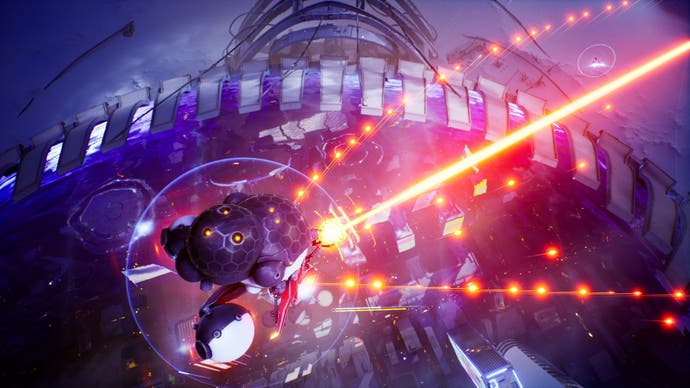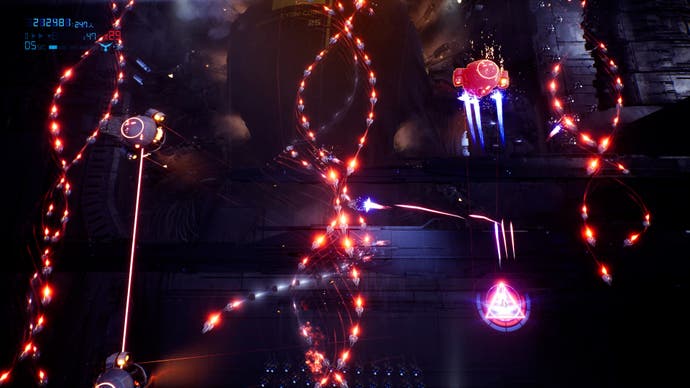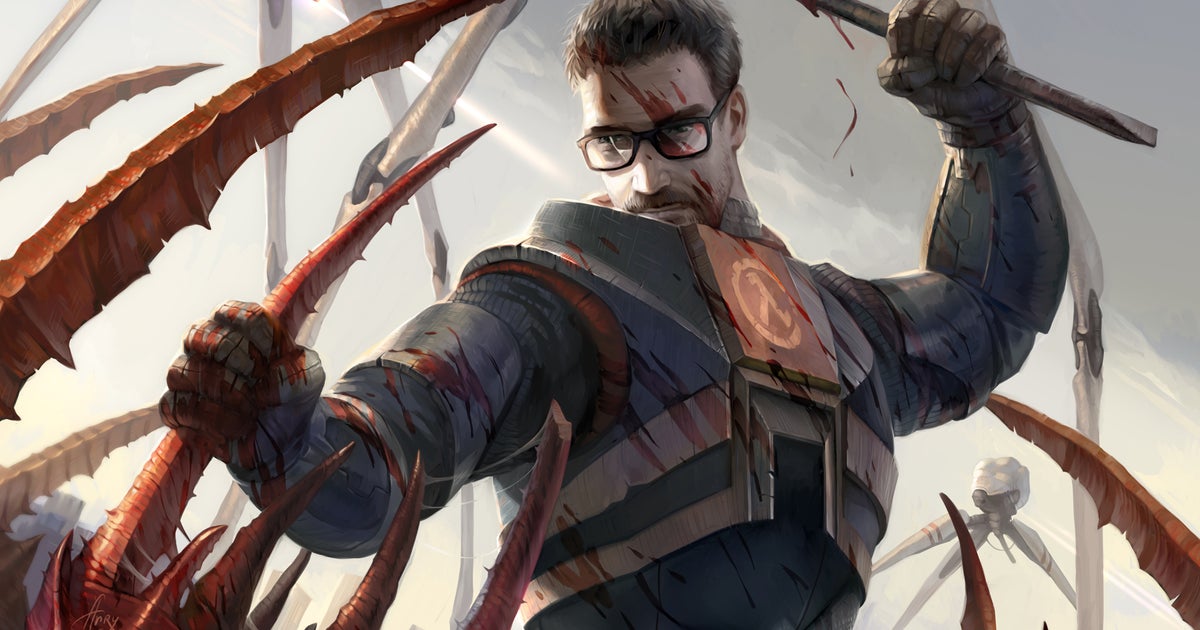KeelWork’s gorgeous shooter dares to innovate in the genre and strives to unite players of all levels. This is what a blockbuster shooter should be like.
Arcade shooters are, in fact, about vulnerability. Despite their reputation for being at their most intense, over-the-top, they almost always put you in control of a weakling armed with a weapon; a container that disintegrates after a single, brief contact with an enemy bullet.
Not so with Cygni: All Guns Blazing, a new shooter that insists you can keep playing even after being shot dozens of times by enemies. It sounds like a reckless subversion of what makes the genre so special and evocative. Yet Scottish developer KeelWorks seems meticulous in its subtle revolution of the shooter genre – and who it serves. Some even argue that Cygni has delivered a vision of what a blockbuster shooter could be; one that’s stunningly refined, technically powerful, and able to attract and impress a broad mainstream audience.
Cygni is delightful, dazzling, and potentially controversial. When you first play through the main campaign mode, you’ll notice that it’s littered with unusual cutscenes. Compared to the brief animated intros or traditional arcade hooks that most shooters tend to adhere to, the large, cinematic, detailed cutscenes bring a thunderous energy to the game, but their quality helps Cygni live up to its blockbuster ambitions and appeal. Thankfully, they’re also completely skippable, which is crucial for a genre that inspires fans to replay.
Watch on YouTube
Fortunately, the quality of these interstitial scenes extends to the main game as well. When you first fly through the opening level, you’re treated to a detailed city that feels like every part is a living, breathing place. From that moment on, everything from the backgrounds to the enemy designs, soundscapes, and explosion effects is meticulously realized, powerfully establishing the tone of desperate fighting as society is overwhelmed and stretched by the coming of war. The detail is so evocative, in fact, that it’s like looking at a real diorama set. As you dance with your opponents high in the air, you’ll even see the swarms of tiny infantry and vehicles below do battle with equally tiny alien invaders.
KeelWorks’ entry uses a “vertical” style, scrolling vertically on a horizontally oriented playfield. This wider presentation not only gives it more cinematic energy; it also provides a larger area for movement and control. Fortunately, thanks to the dual-stick input, your equipped weapons can be directed nicely left or right, increasing coverage and giving less experienced players a chance to take down foes without being directly overwhelmed by enemy fire.
Meanwhile, for veterans of the genre, it opens up new strategies to explore–albeit at the cost of arcade stick compatibility. With homing missiles enabled, in many stages you’ll even find yourself moving around larger enemies, firing shells in multiple directions. Your secondary weapon, meanwhile, is a laser that can be aimed at enemies on the ground, reminiscent of early scrolling shooters like Xevious and even the mighty Rayforce series. Being able to toggle the lock-on state of both weapons lets you switch between more powerful or more directional fire.
Between stages, you can upgrade your weapons and custom design different firepower configurations that can be switched at any time during the game. This is all very convenient, since you start out with an underpowered pea shooter. But soon, you realize that this is a game about completing the seven stages and then coming back over and over with your newly upgraded abilities, claiming greater dominance and the thrill of playing with upgrades. Alas, the upgrade shop doesn’t explain what it offers, and weapon customization can seem incomprehensible in your early days of playing Cygni.
The seven levels are long by the standards of the genre, with each taking 10-15 minutes, sometimes longer. Compared to the traditional five-level, 30-minute arcade shooter, that’s a lot. But Cygni doesn’t want to be bound by tradition. This isn’t a shooter that encourages you to rush through it, playing through each level in a row. It wants you to take your time to experience the world. Once you’ve beaten it, most of your time will be spent practicing the levels as independent entities, rather than playing through the entire game in one go. With that in mind, the extended level lengths make sense – although it will certainly be tiring for veterans of the game.
More importantly, the game’s core systems are elegant enough to support high-level play while also recognizing that most players just want to experience the thrills of the experience. The game is still not easy, but instead of lives, players are given a generous shield that can withstand five hits. Many downed enemies spawn a single power-up that can be picked up to provide one more unit of protection to your shield. With the press of a button, the shield unit is redistributed to your weapons, allowing you to gain energy, fire expendable rockets, or continue fighting with multiple weapons. These power-up units can be moved back to your shield if needed. If your shield is full, the same power-ups accumulate as in-game currency, which can be used to upgrade during downtime between stages.
Overall, power-ups rain down in large numbers, meaning you can often dash through a barrage of bullets, take a hit, and then pick up enough to recover right away. As a result, Cygni is really a game of real-time resource management as much as it is about dodging bullets. This is especially true on the easiest difficulty setting. Increase the intensity, and while you can still take a ton of hits, switching resources back and forth between shield and weapon becomes an all-consuming strategic focus.
For veterans of the genre, there are still plenty of sections that restrict the flow of items, instead requiring you to carefully dodge every bullet. In fact, there are probably more of these in easy mode. In hard mode, the difficulty is extreme, and the ability to absorb damage is limited. In fact, its most challenging mode is arguably the one that hews closest to the existing conventions of the genre – and yet Cygni is at its best when it leans into being different.
That’s why Cygni may still be divisive among some players. Shifting the focus of the game away from dodging bullets will feel like sacrilege to many. If you’re a die-hard arcade fan, you may also feel that Cygni’s bullet-hell ships trivialize or even undermine the entire game; like a racing game that does most of the steering for you. Likewise, the same group of people may feel that the lengthy levels that replace short, well-planned sections are too repetitive, and that the drawn-out battles feel more like a war of attrition.
At the same time, the scoring mechanic isn’t particularly good at encouraging high-risk or daring play. It encourages players to knock down multiple enemies in a row, or even knock down multiple enemies in a row; however, there are so many enemies that it’s hard not to constantly knock down targets, which makes the scoring feel a bit disconnected from the way enemies and bullets appear on the screen. Additionally, bullet visibility isn’t perfect, with bullets often getting lost in the mix of explosions and particle effects. While the cutscenes are of high quality, the narrative elements feel a bit familiar and lack depth.
If you’re all about games of wits and bravado, with spiraling, complex scoring systems in short, uninterrupted onslaughts, Cygni might not be for you. That said, its accomplishments and broad appeal are evident in the local co-op mode, where veterans and newcomers can share a meaningful experience together and even contribute to a shared score, allowing both parties’ efforts to be incorporated into combos. This is probably the best mode in the game.
Ultimately, this isn’t a cynical dilution of the established shooter formula. Instead, the team approached it from a rather different angle, and ended up creating a visually stunning, technically ambitious, engaging, and thrilling shooter that you don’t need to be a fan of the genre to enjoy. And that’s probably exactly what a blockbuster shooter should be.
Konami provided a copy of Cygni: All Guns Blazing for review.











